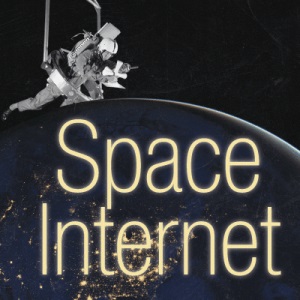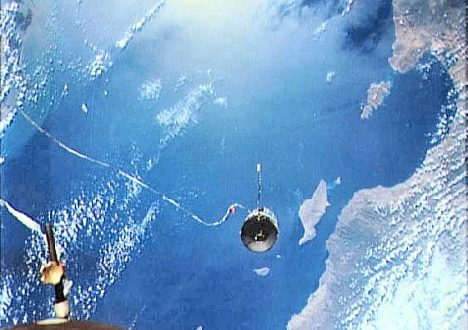Space Internet [Infographic]
 The idea of global internet via satellite is nothing new.
The idea of global internet via satellite is nothing new.
Pioneers that failed to capture the global frontier:
In the late 90’s several companies began projects to provide worldwide voice and data communications from mobile devices.
Iridium:
- Service launched: November 1, 1998
- Bankrupt: August 1999
Globalstar:
- First Call Placed: November 1, 1998
- Bankrupt: February 15, 2002
Both services declared bankruptcy not long after they were launched. Both companies have re-started and are providing hundreds of thousands of the customers with satellite phone and internet services today.
 Source: ComputerScienceDegreeHub.com
Source: ComputerScienceDegreeHub.com
Clash of the Titan
Titan Aerospace produces solar-powered drones
- High-tech, solar-powered satellite.
- Can travel the globe and stay in flight for up to 5 years.
- Can carry a payload of up to 70+ lbs.
- 54 feet long x 164 feet wide.
- Weighs 350 pounds.
- Can cover an area of over 6,500 square miles, meaning a single SOLARA platform has the reach of over one hundred terrestrial cell towers.
Early 2014: Facebook announced plans to purchase Titan Aerospace for $60 million
Facebook’s stated Goal: To bring internet access to developing areas.
This would be in direct competition to a Google project launched in Beta in Project Loon in 2011:
- Project Loon is a global network of high altitude balloons, which ride the winds in the stratosphere.
- They can coordinate with other balloons to provide stable internet coverage on the ground using solar powered electronics.
- Signals are transmitted from the balloons to a specialized Internet antenna mounted to the side of a home or business.
April 2014: Google purchased Titan Aerospace for an undisclosed amount.
Google’s stated goal: to improve imagery capabilities for Google Earth.
The Titan Aerospace SOLARA platform, would give Google the capability to use live mapping with a continuous stream of real-time data.
Titan Drone vs. Project Loon – How Do They Compare?
Longevity:
- Loon – 100+ days
- Titan – 1826+ days
Size (it matters):
- Loon – 49ft wide / 39ft high
- Titan – 120ft wingspan / 49.2ft long
Payload:
- Loon – 22 lbs
- Titan – 70+ lbs
Altitude:
- Outer space – 328,083 ft
- Red Bull Stratos Jump from space by Felix Baumgartner – 125,000 ft
- Loon – 60k – 90k ft
- Titan – 65k ft
- Commercial Airliners – 30k ft
Data:
- Loon: 3G (>0.1 Gbps)
- Titan: 1 Gbps
Coverage:
- Loon: Each balloon can provide connectivity to a ground area of about 485 square miles.
- Titan: Each drone can provide cell coverage of about 6,500 sq mi.
Titan Drones Pros and Cons
- Fixed-wing drones are more reliable for long distances.
- Easy to land if necessary.
- Could potentially cause a lot of damage by falling in an urban area.
- Likely to make other countries nervous.
Google Loon Pros and Cons
- Safer and more accepted than drones.
- Lightweight “weather” balloons are less likely to get shot down by governments.
- Big balloons are risky to in the air – they’re thin and wear out easily.
- Easily moved by high stratospheric winds (up to 100mph).
No matter how you look at it, Google’s got you covered.
Would you like to receive similar articles by email?





